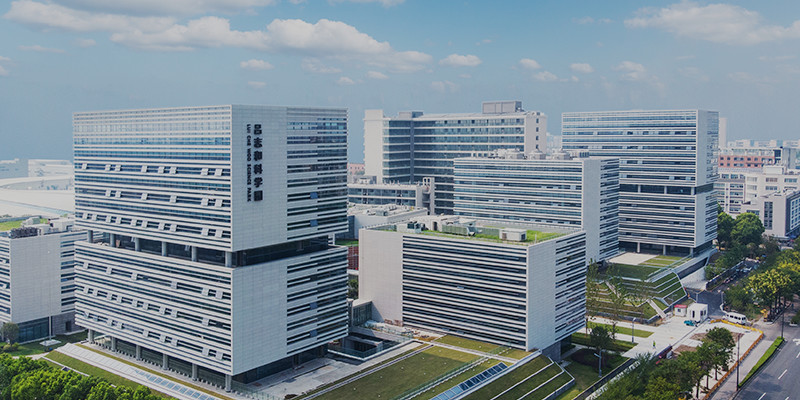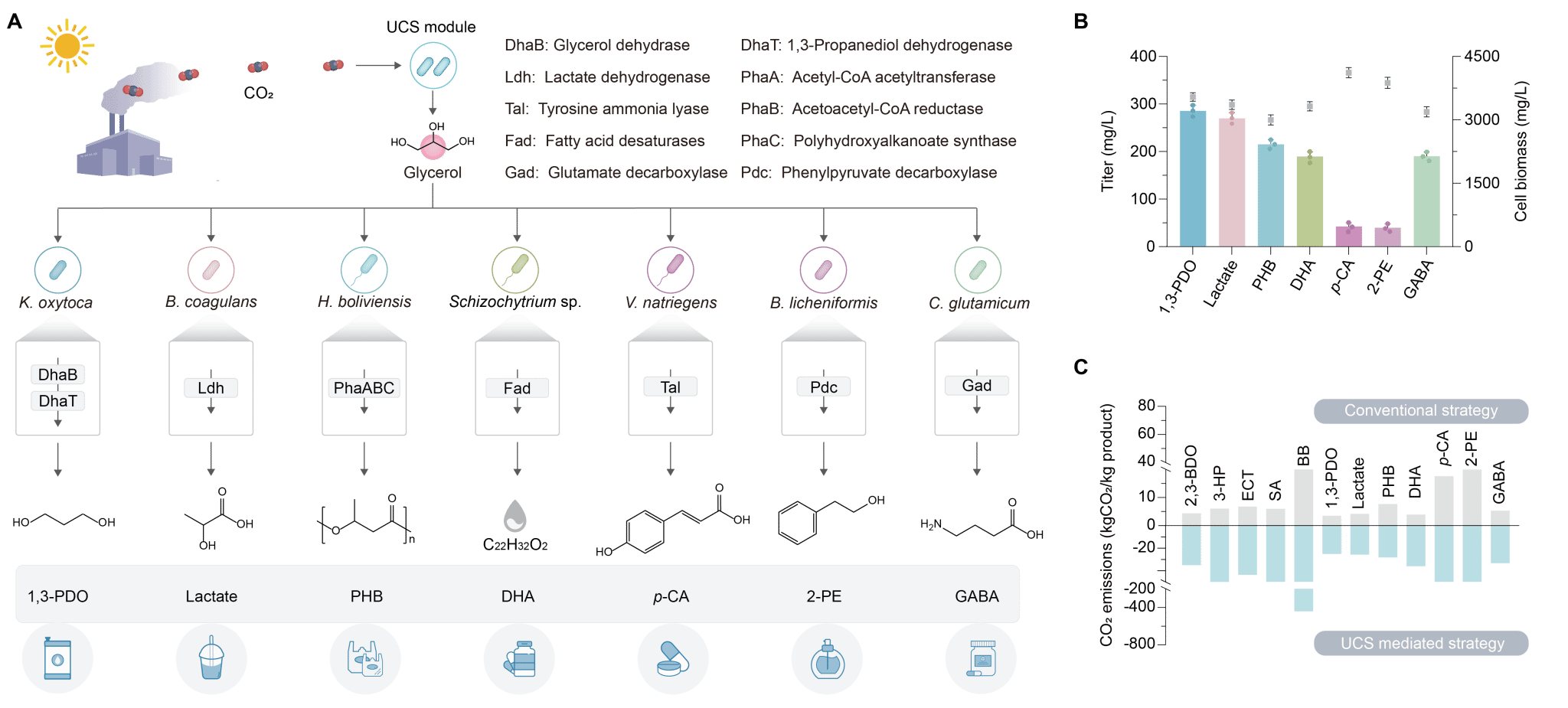搜索


Recently, the research team led by Jun Ni from the School of Life Sciences and Technology at Shanghai Jiao Tong University and the Center for Innovation in Synthetic Science at the Zhangjiang Advanced Research Institute published their latest study titled “Facilitated channeling of fixed carbon and energy into chemicals in artificial phototrophic communities” in the Journal of the American Chemical Society. In previous work, Ni's group developed a highly compatible artificial photosynthetic community for biosynthesis (Angew. Chem. Int. Ed. 2023, 62, e202215013; ChemBioChem 2023, 24, e202300122). By employing a spatial partitioning strategy to couple photosynthetic carbon fixation with quiescent cell catalysis, they achieved gram-per-liter-scale synthesis of CO₂ into multiple high-value-added products (Nat. Synth. 2023, 2, 960-971). This latest work represents another breakthrough by the team in the field of CO₂ bioconversion driven by artificial microbial systems. The study developed a universal carbon fixation module, which further expanded the boundaries of artificial photosynthetic community design, enabling light-driven efficient synthesis of multiple chemicals from CO₂.
High-value CO₂ utilization technologies hold promise for simultaneously mitigating climate change and enabling sustainable biomanufacturing. Artificial photosynthetic communities, through specialized collaboration among members, can reduce metabolic burden and enhance overall CO₂ utilization efficiency, offering broad application prospects in high-value product production, bioremediation, and medicine. However, low fitness among community members results in inefficient carbon and energy transfer rates between species, severely limiting synthetic pathways from CO₂ to target molecules.
This study developed a universal CO₂ fixation module based on the photosynthetic microorganism cyanobacteria, efficiently fixing carbon and energy into glycerol—a metabolically accessible intermediate carbon source. Bioinformatics analysis using the KEGG database and environmental sample sequencing revealed over 7,000 naturally occurring microorganisms capable of utilizing glycerol, offering potential candidates for constructing artificial photosynthetic communities with the universal carbon fixation module. The team constructed artificial photosynthetic communities by co-culturing glycerol-producing cyanobacteria with model microorganisms Escherichia coli and Saccharomyces cerevisiae, achieving the synthesis of compounds such as icosadienone, 3-hydroxypropionic acid, bisabolene, and succinic acid. Furthermore, the team explored the potential of the universal carbon fixation module to collaborate with other industrial microorganisms. They constructed artificial photosynthetic communities with Bacillus coagulans and Bacillus glutamicus, among others, to synthesize over ten compounds including phenethyl alcohol. Transcriptomic analysis subsequently revealed that efficient carbon and energy exchange, accelerated electron transfer, and nutrient cycling likely play crucial roles in promoting species interactions.

Figure: Artificial photosynthetic community based on universal carbon fixation modules for biosynthesis
This research not only expands the boundaries of artificial photosynthetic community creation but also establishes a “plug-and-play” negative-carbon biosynthesis platform. It significantly enhances the synthesis efficiency from CO₂ to compounds, promising to advance the development of low-carbon biomanufacturing industries.
Li Chaofeng, a doctoral candidate at the School of Life Sciences and Technology, Shanghai Jiao Tong University/Zhangjiang Advanced Research Institute, is the first author of this paper, with Associate Professor Ni Jun as the corresponding author. This work was supported by the National Natural Science Foundation of China (Youth Student Basic Research Program) and the National Key R&D Program of China.
Original link: https://doi.org/10.1021/jacs.4c15940
Author: Ni Jun's Team
Contributing Unit: Center for Innovation in Synthetic Science






 Address:No.1308 Keyuan Road, Pudong District, Shanghai
Address:No.1308 Keyuan Road, Pudong District, Shanghai Phone:86-21-54740000
Phone:86-21-54740000 E-mail:zias@sjtu.edu.cn
E-mail:zias@sjtu.edu.cn